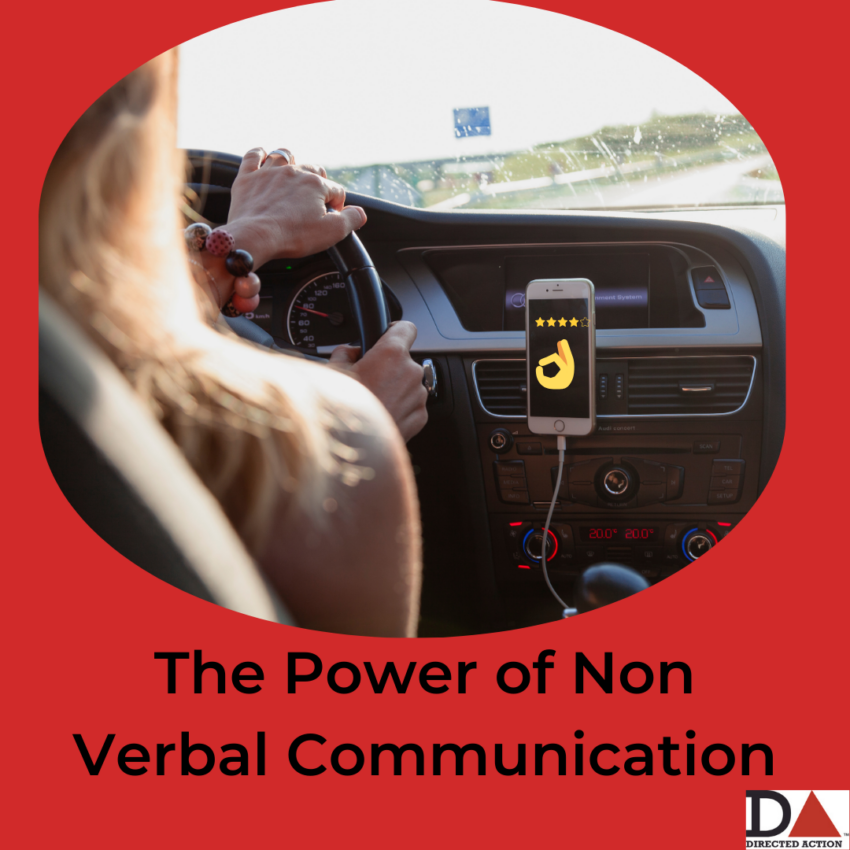Lyft and ASL
When I was in Texas recently, I took a Lyft from the Toyota offices back to my hotel. When the app confirmed my driver, it sent me a notification that my driver was a deaf person and directed me to this link of helpful ASL phrases.
This was a small moment in a long week but it left me thinking about how a tiny step can have a profound impact. As someone who coaches leaders through large scale transformations, I know how important it is to bring people together to communicate, to give them the tools they need to bridge communication gaps and how powerful non verbal communication can be.
The accommodation and forward thinking of Lyft as an employer, the importance of having a connection with a person who has your life in their hands, the willingness of a driver who is deaf to communicate with a hearing person who is their passenger – all of these highlight the importance of effective communication, even and especially between strangers.
Not only that but, ASL is a vibrant and expressive visual language, relying heavily on non-verbal cues such as facial expressions, body language, and hand gestures. While many may not be fluent in ASL, learning basic phrases can make a world of difference in facilitating communication and fostering inclusivity.
The article from Lyft offers a range of ASL phrases, from simple greetings like “hello” and “goodbye” to more specific inquiries such as “what’s your name?” and “Do you sign?” These phrases serve as valuable tools for breaking down barriers and bridging the communication gap between individuals who are deaf or hard of hearing and those who are not.
Echo Marvel Series
Lyft is not the only major company that is highlighting the benefits of non verbal communication. In their latest television series featuring Echo, the first Native American lead character in the Marvel Universe, Marvel hired an actor who is deaf and Native American.
Echo as a character is a long-overdue step forward in diversity and representation within mainstream media. As a deaf Native American superhero with exceptional combat skills, Echo embodies strength, resilience, and cultural richness. Her presence on screen provides much-needed visibility for Native American representation and offers audiences a chance to see themselves reflected in the stories of superheroes.
The Impact of Authenticity
Executive Producer Sydey Freeland tells how she and the crew were invited to attend a powwow with members of Choctaw Nation. “I can explain to you what a powwow is until I’m blue in the face, but for you to see it in real life is something else entirely,” Freeland explains. “I wanted my production designer to see it through his eyes. I wanted my cinematographer to see through her eyes. I want my A.D. [assistant director] to see it through his eyes. I wanted that for the costume designers, the hairstylists, the makeup artists—everyone. I wanted them to absorb all of that internally and then put it into their various areas of expertise to hopefully ground and create a more authentic story.”
One of the most compelling aspects of Echo’s character is her unique abilities and perspective. As a deaf individual, Echo relies on her heightened senses and intuition to navigate the world around her. Her experiences as a member of the deaf community inform her character in profound ways, adding depth and authenticity to her portrayal on screen.
Non verbal communication is important to everyone
These examples also underscore a broader point about effective communication and the power of non-verbal communication. In a society where verbal language often takes precedence, the importance of non-verbal cues can sometimes be overlooked. However, for individuals who communicate primarily through ASL, these non-verbal cues are the foundation of their language and communication.
According to Executive Producer, Sydney Freeland:
“Week one, we all started taking ASL classes, and some really great things came out of it,” Freeland recalls. “It actually ended up dictating our entire visual style. The hands are the text, and the face is the subtext. You need to see those two things together to understand what a person’s feeling. That’s a positive consequence that came from all of our prep work.”
By embracing ASL phrases and incorporating non-verbal cues into our interactions, we not only facilitate communication with the deaf and hard of hearing community but also allow for a new way of seeing, and of telling stories. These skills become crucial for all businesses who need to engage employees, stakeholders, and customers as they undergo a major change.
Non-verbal communication transcends linguistic and cultural barriers, allowing us to connect with others on a deeper level and build stronger relationships based on empathy and mutual respect.
The skills exemplified in ASL give us tools for transformation
In essence, learning ASL phrases isn’t just about acquiring a new skill; it’s about recognizing the diversity of communication needs and taking proactive steps to ensure that everyone is included and valued. Whether it’s a simple “thank you” or a more complex conversation, embracing ASL and non-verbal communication enriches our interactions and strengthens the fabric of our communities.
Leaders who ignore the power of non-verbal communication – from themselves and their stakeholders, do so at their own risk. By embracing the power, leaders can unlock a new way of seeing and telling their transformative stories.



